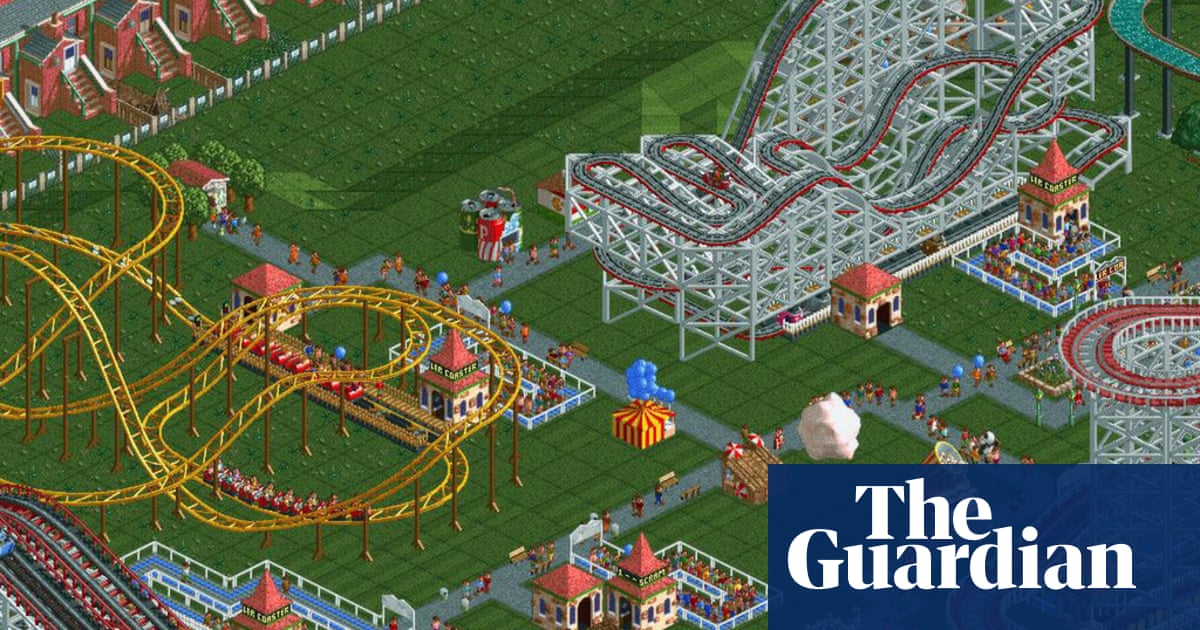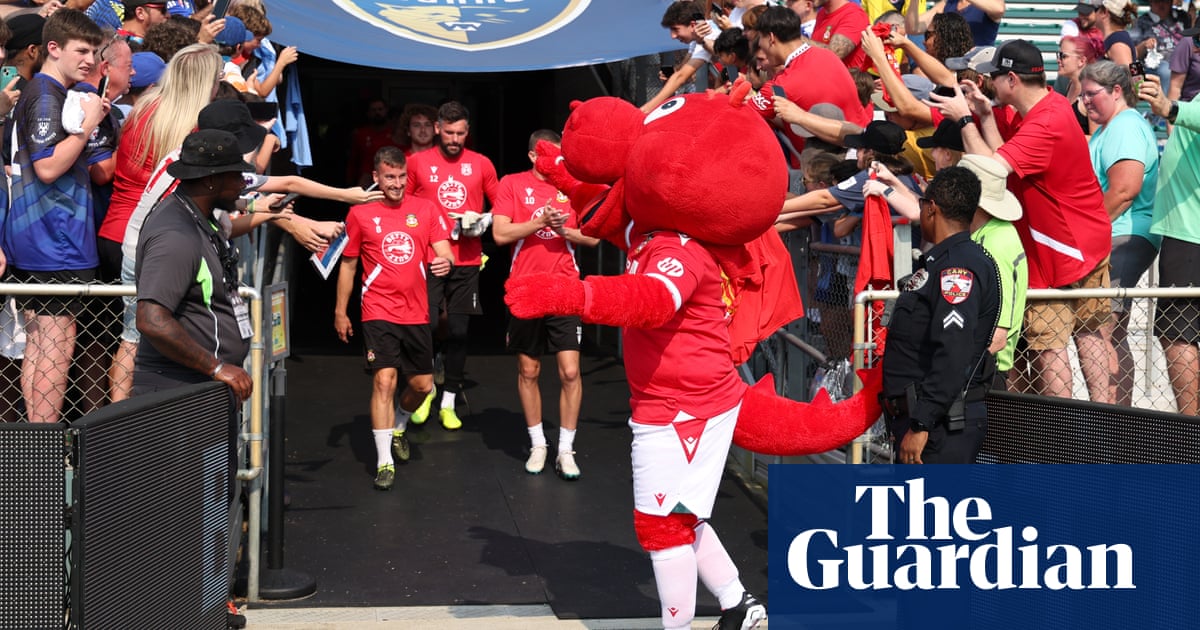
‘Iremember I would rush home from school just to play RollerCoaster Tycoon,” recalls John Burton, a senior creative lead at Merlin Entertainments (the owner of UK-based theme parks including Alton Towers, Chessington World of Adventures, and Legoland Windsor) and the man designing the forthcoming 236ft (72-metre) drop Hyperia rollercoaster at Thorpe Park. “I would then go to sleep dreaming I could become the next Walt Disney.”
When he reflects on the game, the adult Burton speaks with the excitement of a teenager on a sugar high. “I learned so much about how rollercoaster systems work with their block zones, or even the little tricks of the trade at theme parks like adding side queues and strategically placed toilets,” he continues, confirming my suspicion that the Jumanji-themed jungle world he helped to design for Chessington has what he calls “subconscious similarities” to the classic PC game’s Jolly Jungle scenario. “If I have to travel to a theme park abroad for work, I still load up the original game on the plane and sketch out ideas. I never really stopped playing.”
Released 25 years ago today, RollerCoaster Tycoon (the biggest selling PC game of 1999) achieved viral success before online virality was an established thing, inspiring countless geo-site forum communities where users could share designs and re-creations of their favourite real-life rides. These communities persist even today, with one designer recently creating a nightmarish existential rollercoaster that takes a sickening 12 years to complete.
Selling 700,000 copies in its first year, the 1999 theme park strategy game RollerCoaster Tycoon helped keep its publisher Atari alive and kicking. Today is its 25th anniversary. RollerCoaster Tycoon didn’t just give millions of fans an infinite toolbox of fun to build the theme parks of their candified dreams (more on this later), but helped to demystify the whole adjacent theme park industry, and make it less male dominated.
“For years and years, I remember being the only woman working on rollercoaster projects,” says Candy Holland, executive creative director at Legoland resorts and an industry stalwart who helped design the world’s first vertical drop rollercoaster, Oblivion, at Alton Towers. “But when RollerCoaster Tycoon came out, we suddenly had a surge of young women applying for jobs. They were utilising RollerCoaster Tycoon to build their understanding of what, I guess, was previously seen as a pretty niche industry.”
One of those young women was Flora Lui, senior project manager for Merlin’s “magic making” team in California. Unlike so many of the games from its era (Resident Evil, GoldenEye 007), she argues that RollerCoaster Tycoon traded death and destruction fantasies for joyous creativity, and therefore attracted male and female players. “Playing RollerCoaster Tycoon was radical,” she says.
“I remember I would change the colours so all my rides were pink. I’d spend a lot of time making queues that were more like mazes, which hilariously confused the customers, and I would show my parents all the designs, too. As a project manager I must consider the push and pull of a budget; the effect of increased visitation; safety; managing guest flow, and delivering magic. Sometimes when I’m in meetings, considering all these things, I remember how RollerCoaster Tycoon led me down this path.”
From the tranquil Leafy Lake to the more exhilarating Haunted Harbour and Diamond Heights, each of the game’s 21 scenarios was about finding quick solutions to dilemmas and creating a theme park capable of giving pixelated punters the times of their lives. “The game’s success really kept the Atari business going,” admits Atari’s CEO, Wade Rosen. “I think the fact that you could build these really intricate rollercoasters, or completely ignore all of that and launch [customers] into a lake or see how many of them you could nauseate, was really the genius of it”
Everyone who played it had a “different experience”, Rosen argues, and he says the canvas of creativity present in RollerCoaster Tycoon was practically a prototype for Minecraft later on. He was a ruthlessly capitalistic player, he says. “I really liked the business aspects of it … When it was raining, I’d quickly put up the prices on umbrellas. I’d be like, now it’s $20. And then you’d bring in a bunch of cash.”
The game eventually sold well over 6m copies worldwide, becoming the launchpad for a successful franchise – despite the fact that, at the time, its 2D isometric graphics stood out like a sore thumb among the fast-improving 3D graphics that characterised 1999’s big hitters. “The graphical style is now seen as whimsical and unique instead of outdated and restrictive, like it was back then,” the game’s Scottish creator, Chris Sawyer, says. “And, perhaps because the focus was much less on graphical detail and immersiveness, it was possible to put more depth and detail into the actual gameplay.
“From an early age I’ve always enjoyed building things with Lego, often trains or mechanical machines, but always with that freedom to do things your own way and to try things out to see what works. RollerCoaster Tycoon’s roots possibly come from that – a desire to have something simulated on the computer where you could build your own designs from scratch and try things out, and generally just learn what works and what doesn’t, and what’s fun or not fun to ride.”
Having created the critically acclaimed but commercially lukewarm Transport Tycoon, Sawyer began researching RollerCoaster Tycoon around 1996. Ironically, he grew up terrified of rollercoasters after becoming convinced his cart on The Scenic wooden ride in Great Yarmouth would derail during a childhood visit. At first, he thought a theme park game might be “too niche”, but after finally falling in love with thrill-seeking rides as an adult, he knew he had landed on a special idea. He started touring the world’s greatest theme parks and taking notes.
“Perhaps the game’s enduring interest is down to it appealing to players’ nurturing instincts – we all like to build or create something of our own and then look after it, improve it, make sure it looks good and works well and grows well, and that’s the crux of this game,” he says. “The other aspect of the game which perhaps stands out is that it still remains one of very few games which is almost completely positive – you’re rewarded for good design and management rather than destroying things, and fundamentally the game is all about keeping your little guests happy.”
Huge sales aside, Sawyer said he knew RollerCoaster Tycoon had made an impact on the world when he visited a theme park in the US in the early 2000s. “I remember seeing a whole series of food stalls in a small theme park which looked just like RollerCoaster Tycoon food stalls, with giant items of food or drink modelled on top – that felt quite eerie.” When I tell about the real-life rollercoaster designers I spoke to for this feature, he seems a little surprised. “I would feel quite proud if my games had actually steered some of them towards their careers,” he replies.
Yet while RollerCoaster Tycoon set Burton and Lui off on their career paths, they are both keen to highlight that the game doesn’t get everything right about theme-park design. “Real life rollercoasters aren’t set in a grid; you can be way more flexible,” says Burton. “In the game it costs £50 to place a piece of track down. I wish it was £50, as I could build the longest rollercoaster in the world. The reality is these are million-pound investments. The speed of the rollercoasters aren’t possible in real life either – the G-forces would kill a real person.”
Liu, meanwhile, says that if she dared to recreate some of the zigzag queues she made in the game as a child, she’d probably be sacked. “The greatest rides are the ones that tell a story,” she says. “The reality is there are hundreds of people from different departments putting rollercoasters together.”
If you’ve been on a real-life rollercoaster lately, maybe it was designed by a millennial who grew up playing RollerCoaster Tycoon. According to Rosen of Atari, the series will soon expand with a new 3D entry, but the game’s original creator, Sawyer, says he has no interest remaking the original two games with next-gen graphics. Whatever the future holds for the series, Burton of Merlin is just happy it was RollerCoaster Tycoon he got drawn into in 1999, rather than the year’s other paradigm-shifting game: Pokémon on the Game Boy.
“The game just gave you complete freedom; there were no rules,” Burton says. “It’s crazy, because one of the things that helped me get a job at Merlin was recreating the Alton Towers Nemesis ride on RollerCoaster Tycoon and showing it at my interview. Now I am working on the new Nemesis Reborn rollercoaster. It’s mind-blowing how a video game inspired me to become a real-life rollercoaster creator.”












